How Japan's skyscrapers are built to survive earthquakes

Japan is home to some of the most resilient buildings in the world - and their secret lies in their capacity to dance as the ground moves beneath them.
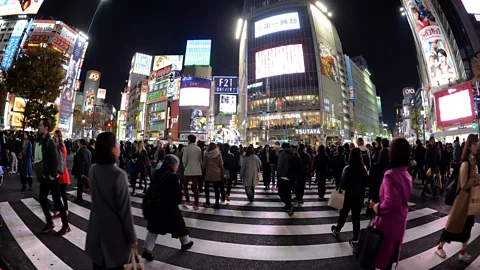 Getty Images
Getty ImagesThe high rises of Tokyo, Osaka and Yokohama dominate the cityscapes around them. The towers give the impression of being as immovable and steadfast as a human-made structure can be.
These towers are the fixed backdrop to daily urban life in Japan, as they are in any large and developed city in the world. While people and traffic bustle around them, they are fixed and still – the pins that hold the rest of the hectic city together.
It takes an earthquake to reveal that perspective to be an illusion. In Japan, skyscrapers have to be able to move.
(Credit: Getty Images)
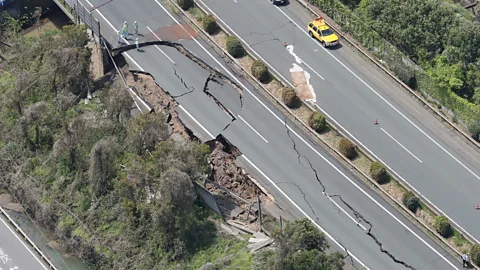 Getty Images
Getty ImagesThe 2011 Tokohu earthquake is known as one of the most devastating in recent times. But it was just one of many seismic events that strike Japan each year.
The Japanese archipelago rests along the Pacific Ring of Fire, at the margins of the Eurasian, Philippine and Pacific tectonic plates. At the margin, one tectonic plate is forced beneath the other, causing a build-up of extraordinary pressures. An earthquake is the release, sending vibrations strong enough to raze an ordinary city to the ground.
Here we can see the Kyushu highway, damaged by a 6.4-magnitude quake in 2016.
(Credit: Getty Images)
 Getty Images
Getty ImagesBut the tower blocks of Japan are not ordinary buildings. All buildings – even if they are small or temporary structures – must be resilient to earthquakes in the country, says Jun Sato, a structural engineer and associate professor at the University of Tokyo.
There are two main levels of resilience that engineers work towards: the first is to withstand smaller earthquakes, the type that a building might see three or four times in its lifespan in Japan. For this magnitude, any damage that requires repair is not acceptable. The building should be so well designed that it can escape these earthquakes unscathed.
The second level of resilience is withstanding extreme earthquakes, which are rarer. The bar is set by the Great Kanto Earthquake of 1923. This was a large earthquake – of magnitude 7.9 – that devastated Tokyo and Yokohama, and killed more than 140,000 people.
For earthquakes of a greater magnitude than this benchmark, preserving buildings perfectly is no longer the goal. Any damage that does not cause a human casualty is acceptable.
“You design buildings to protect people’s lives,” says Ziggy Lubkowski, a seismic specialist at University College London. “That’s the minimum requirement.”
(Credit: Getty Images)
 Getty Images
Getty ImagesTo withstand the incredible forces of an earthquake, buildings have to absorb as much seismic energy as possible.
“When the structure can absorb all the energy [from the earthquake], it will not collapse,” says Sato.
This mainly happens in a process called seismic isolation. The buildings or structures are put on a form of bearing or shock absorber – sometimes as simple as blocks of rubber about 30-50cm (12 to 20in) thick – to resist the motions of the earthquake. Wherever the building columns come down to the foundation, they sit on these rubber pads.
(Credit: Getty Images)
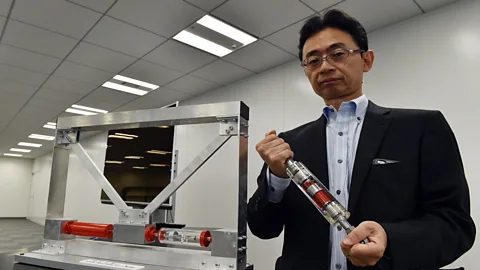 Getty Images
Getty ImagesAdaptations to the base of the building are one of the main ways that buildings are made to withstand earthquakes. But motion dampers throughout the height of the building can also improve resilience.
“A tall building may move 1.5m (5ft) but if you put dampers at certain levels – every second floor all the way up to the top – you can reduce that motion to a much smaller amount, preventing damage to the superstructure,” says Lubkowski.
The dampers tend to look something like a bicycle pump, except it’s filled with liquid instead of air.
“As you compress the pump, it pushes against the liquid. It doesn’t compress very much but it will move a little bit. That process can reduce the vibrations within the building.”
Here we see an architect displaying an oil damper used in the 53-storey Roppongi Hills Mori Tower building in Tokyo (Credit: Getty Images)
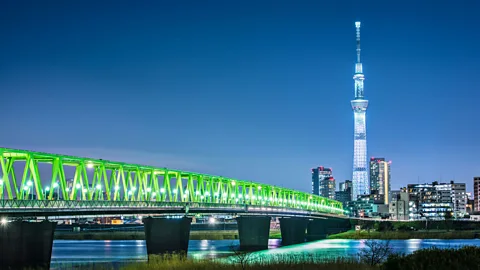 Alamy
AlamyComplex devices to absorb the energy of an earthquake and ease shaking aren’t the only way to make a building resilient to earthquakes. Other methods involve the layout and design of the building itself. “Ideally what we want is to make the building as regular as possible,” says Lubkowski. “If you have each floor at exactly the same height and all the columns on an even grid spacing, the building will perform better in an earthquake.”
But often the designers of spectacular skyscrapers are reluctant to make those kinds of compromises, and tensions between the seismic standards required by engineers and the creative visions of architects are common.
“There are always big conflicts between us,” says Norihiro Ejiri, representative director of the Tokyo-based firm Ejiri Structural Engineers. “Fortunately in Japan, architects are also educated about earthquakes, so engineers and designers are able to discuss with common sense.”
The Skytree Tower in Tokyo is the second tallest building in the world. It is built in a ‘neofuturistic’ style that incorporates some elements of the traditional Japanese pagoda, and includes a central pillar attached to seismic dampers that can together absorb the energy of an earthquake.
(Credit: Alamy)
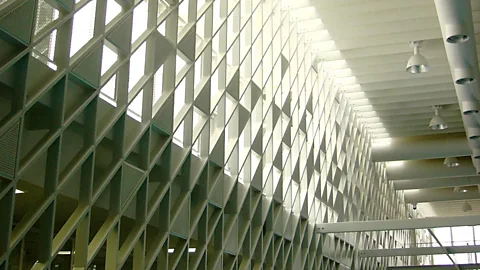 Riken Yamamoto
Riken YamamotoSato has worked on developing seismic engineering solutions that are both functional and elegant. “When I discuss the structural designs with architects, I always look for a way to harmonise seismic elements into overall design of the building,” he says.
“Sometimes I can find how to embed those elements into the floor plan, sometimes I can develop transparent or translucent elements, sometimes I can find the geometry in their sketches which can be developed into seismic elements.”
For example, using mesh structures helps prevent the building’s supports buckling. If one part buckles, having a close neighbour helps stop it bending and distributes the energy absorption. As a result, mesh structures – which can also be very beautiful – help to fortify buildings. Here we see a steel mesh, used in Hakodate Future University, designed by Riken Yamamoto.
(Credit: Jun Sato)
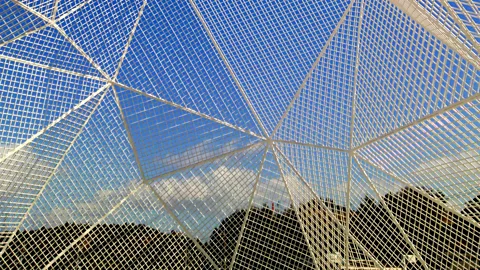 Sou Fujimoto
Sou FujimotoThe goal of creating earthquake-proof buildings is not static. Researchers estimate how future earthquakes might impact a building by observing active faults. But the magnitude of earthquakes in the region appears to be getting larger, so prediction becomes even more difficult, says Ejiri.
But could tomorrow’s buildings withstand even the largest earthquakes unscathed?
“Within reason, yes, such buildings should be possible. The sorts of base isolation systems, bearings, braces, damped outrigger systems that we use will achieve that,” says Lubkowski.
The answer lies in gradually testing all the known technologies we have to stabilise buildings, while trialling ever more creative designs, such as mesh structures. Sometimes small, experimental structures – such as an elaborate polyhedral mesh designed to resist buckling at Naoshima Pavillion, Kagawa (designed by Sou Fujimoto) – can add to the engineers’ repertoire.
(Credit: Jun Sato)
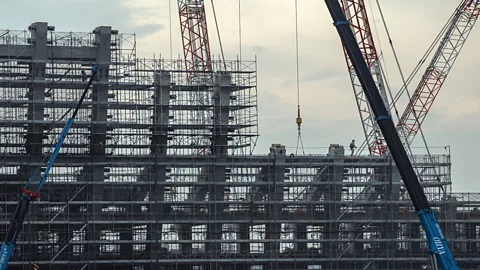 Getty Images
Getty ImagesDue to the unpredictable nature of natural disasters, it is impossible to know whether a design can withstand the next large earthquake until after it happens. It is only in hindsight that engineers and architects can be certain about the resilience of their designs.
(Credit: Getty Images)
